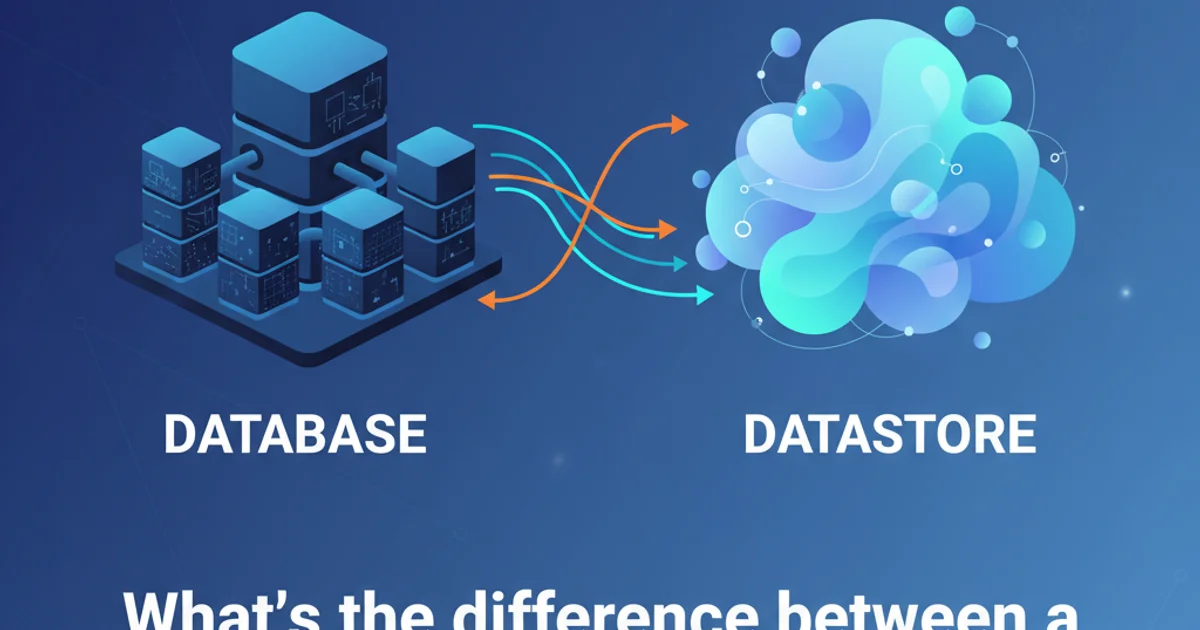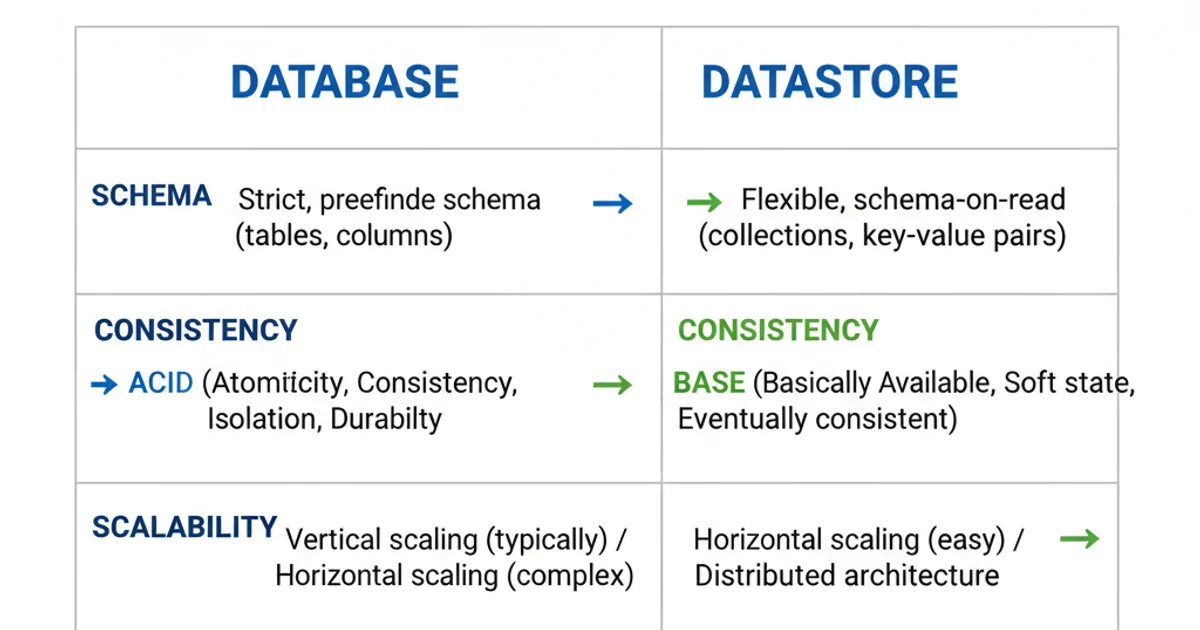What’s the difference between a dataStore and a database?
Categories:
DataStore vs. Database: Understanding the Core Differences

Explore the fundamental distinctions between a dataStore and a traditional database, their use cases, and how they fit into modern data architectures.
In the realm of data management, the terms 'dataStore' and 'database' are often used interchangeably, leading to confusion. While both are designed to store and retrieve data, they represent different levels of abstraction, architectural approaches, and intended use cases. Understanding their core differences is crucial for making informed decisions about data storage solutions in various applications, from simple web services to complex data analytics platforms like those leveraging CKAN.
What is a Database?
A database, in its most traditional sense, refers to an organized collection of structured information, or data, typically stored electronically in a computer system. It is usually controlled by a Database Management System (DBMS). Databases are characterized by their strict schema, ACID (Atomicity, Consistency, Isolation, Durability) properties, and robust query languages like SQL. They are designed for transactional workloads, ensuring data integrity and reliability, and are ideal for applications requiring complex relationships and strong consistency guarantees.
flowchart TD
A[Application] --> B{DBMS}
B --> C[Database Schema]
C --> D[Tables/Relations]
D -- "Enforces ACID" --> E[Data Integrity]
E -- "Structured Queries" --> F[Reliable Transactions]
F --> G[Reporting/Analytics]
B -- "Manages" --> DTypical architecture of a traditional database system.
CREATE TABLE Products (
ProductID INT PRIMARY KEY,
ProductName VARCHAR(255) NOT NULL,
Price DECIMAL(10, 2),
LastUpdated TIMESTAMP DEFAULT CURRENT_TIMESTAMP
);
INSERT INTO Products (ProductID, ProductName, Price) VALUES (1, 'Laptop', 1200.00);
Example of SQL schema definition and data insertion in a relational database.
What is a DataStore?
The term 'dataStore' is a broader, more generic concept that encompasses any repository for storing data. It can refer to a database, but also to file systems, object storage, key-value stores, document databases, graph databases, or even simple flat files. DataStores often prioritize flexibility, scalability, and availability over strict consistency, especially in the context of NoSQL solutions. They are frequently used in distributed systems, big data applications, and cloud environments where diverse data types and high throughput are common requirements. For instance, platforms like CKAN, which manage open data portals, might use various dataStores for different types of data, including a relational database for metadata and file storage for actual datasets.
flowchart TD
A[Application] --> B{DataStore Interface}
B --> C[Relational DB]
B --> D[NoSQL DB (e.g., Document, Key-Value)]
B --> E[File System/Object Storage]
C -- "Structured Data" --> F[Transactional]
D -- "Unstructured/Semi-structured" --> G[Scalable/Flexible]
E -- "Large Files/Blobs" --> H[Cost-effective]
F & G & H --> I[Diverse Data Needs]A dataStore as a generic interface to various data storage technologies.
Key Differences and Use Cases
The distinction between a dataStore and a database becomes clearer when considering their primary characteristics and typical applications. Databases excel in scenarios requiring complex queries, strong data integrity, and ACID compliance, such as financial transactions, inventory management, or user authentication systems. DataStores, particularly NoSQL variants, are better suited for handling large volumes of rapidly changing, unstructured or semi-structured data, often found in social media feeds, IoT sensor data, or content management systems. The choice depends heavily on the specific data model, consistency requirements, scalability needs, and query patterns of the application.

Comparative overview of Databases vs. DataStores.
For example, a platform like CKAN uses a PostgreSQL database to manage its core metadata (datasets, organizations, users) because it requires strong consistency and relational integrity. However, the actual data files (CSV, JSON, etc.) associated with these datasets might be stored in a file system or object storage, which are types of dataStores optimized for binary large objects (BLOBs) and large file storage, not necessarily for complex querying of their internal structure. This hybrid approach leverages the strengths of different storage technologies.